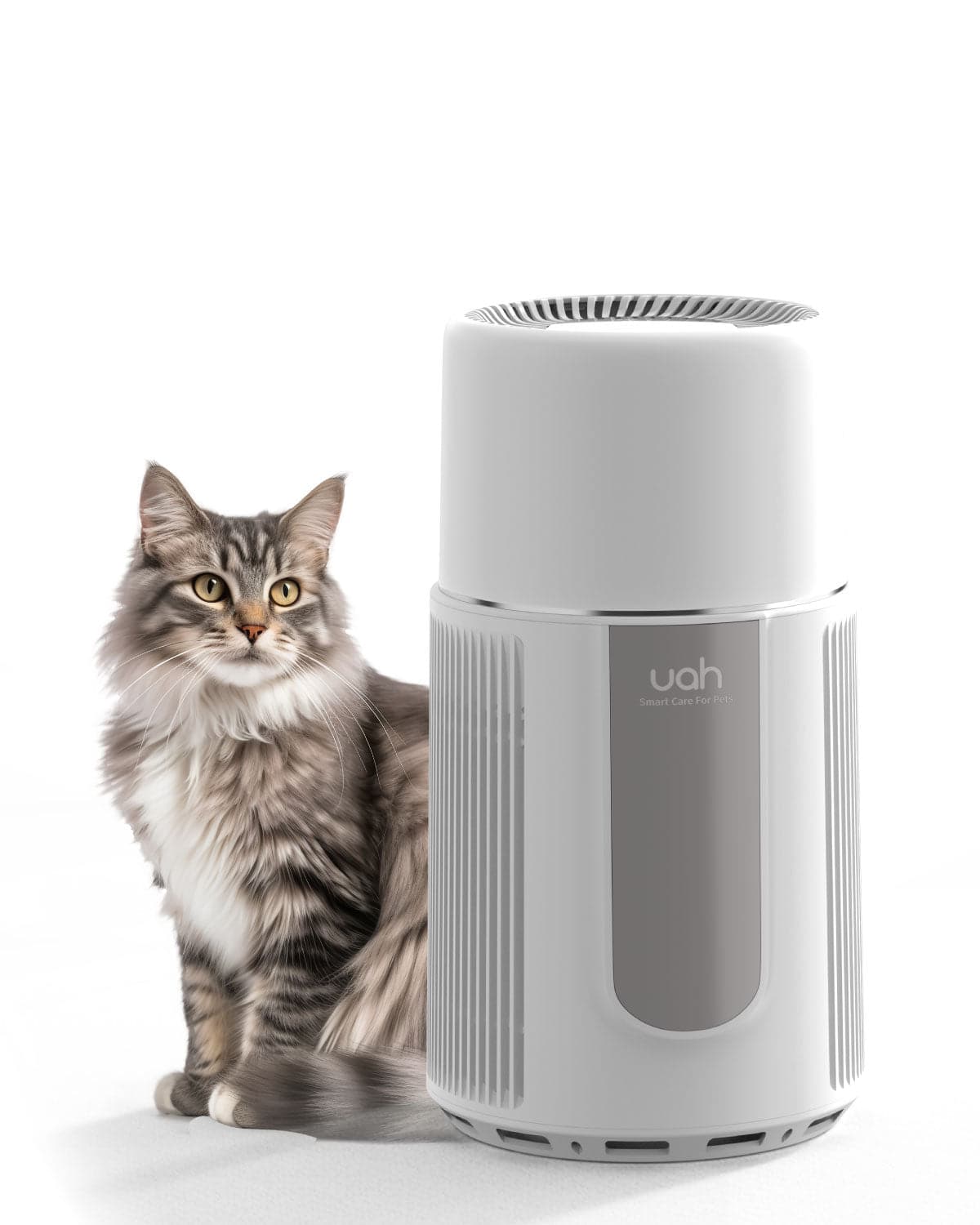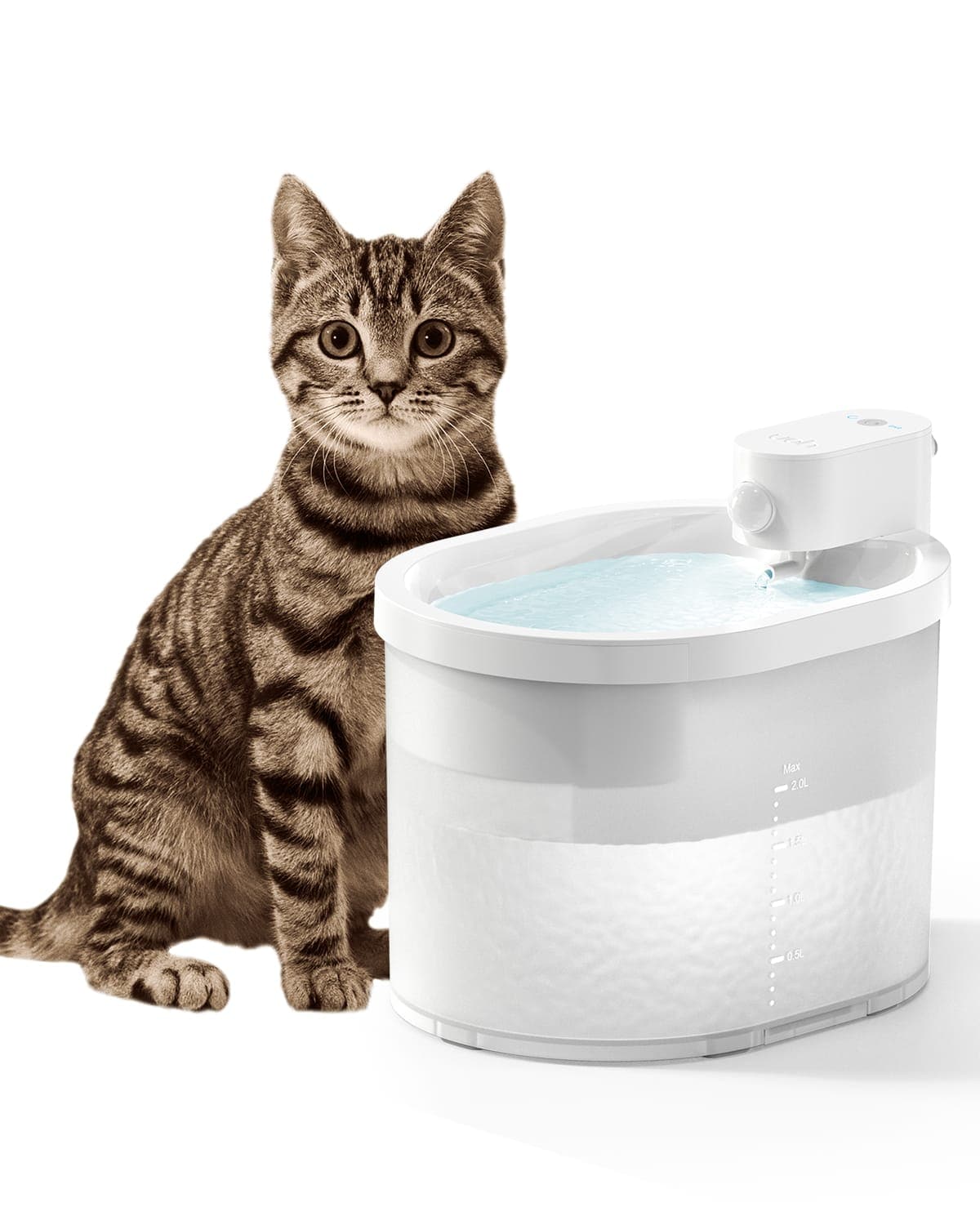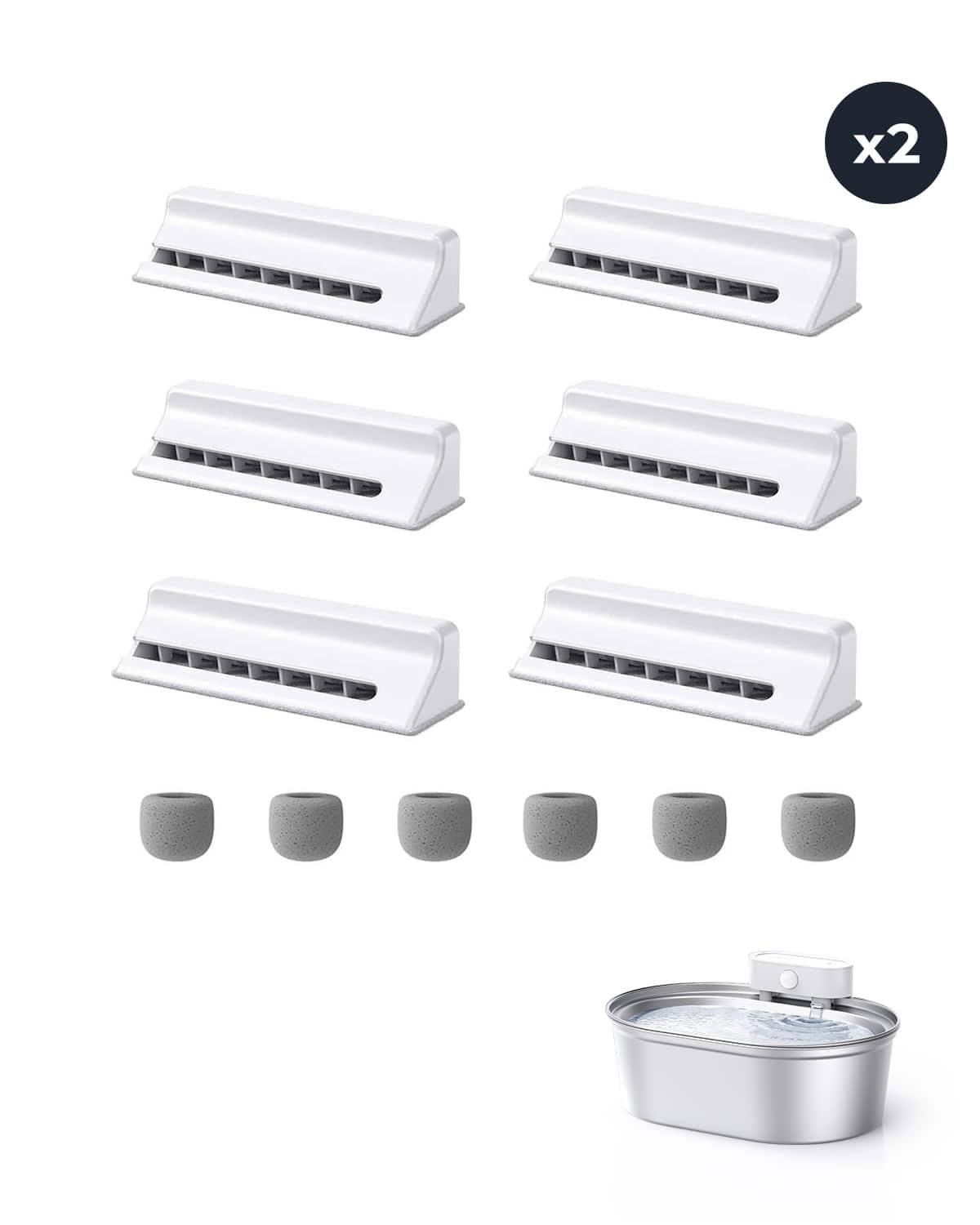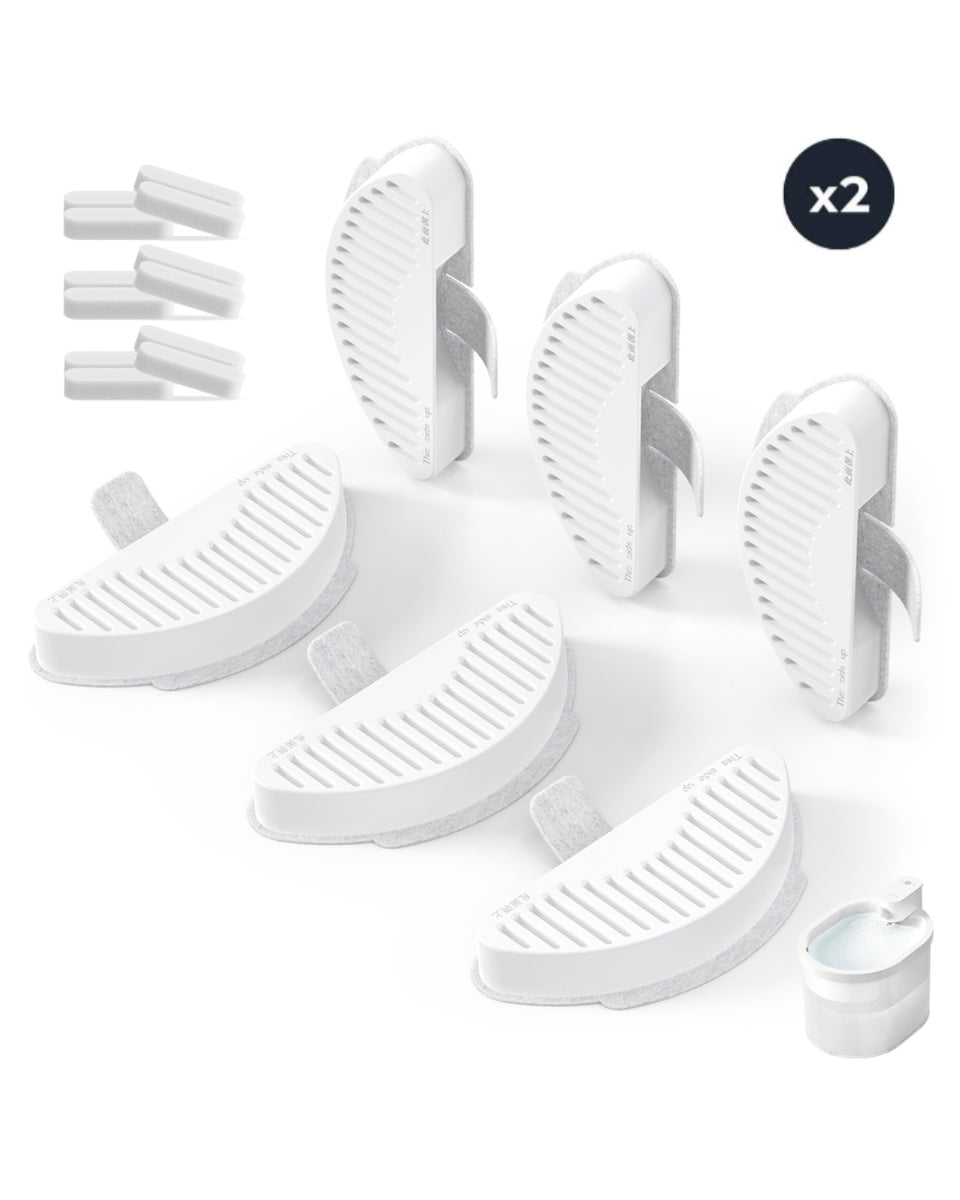How to Deodorize Cat Litter: Effective Tips for a Fresh-Smelling Home
|
|
Time to read 5 min

UAHPET Stainless Steel Self-Cleaning Cat Litter Box

UAHPET 2025 Upgrade Visible Stainless Steel Cat Water Fountain Pro

Uah Pet Air Purifier

Uah Pet ZERO Wireless And Automatic Cat Water Fountain

12 pcs Replacement Filter for Stainless Steel Wireless Pet Water Fountain

12 pcs Uah Pet Replacement Filter for ZERO Cat Water Fountain
|
|
Time to read 5 min
If you're a cat owner, you know that while feline companionship brings joy and comfort, it also comes with the less pleasant task of managing the litter box. One of the most common challenges is dealing with the odor that can emanate from your cat's litter. A smelly litter box isn't just unpleasant; it can also affect the overall ambiance of your home. So, how do you deodorize cat litter effectively? This comprehensive guide will provide you with practical, detailed strategies to keep your home smelling fresh while ensuring your cat's comfort.

Before diving into solutions, it's crucial to understand why cat litter can become odorous:
1. Ammonia Build-Up: Cat urine contains urea, which breaks down into ammonia, a strong-smelling compound.
2. Bacterial Growth: Warm, moist environments like litter boxes are breeding grounds for bacteria that produce foul odors.
3. Poor Absorption: Low-quality litter may not absorb moisture effectively, leading to lingering smells.
4. Infrequent Cleaning: Not cleaning the litter box regularly allows waste to accumulate, increasing odor.
5. Dietary Factors: What your cat eats can influence the smell of their waste.
- Clumping vs. Non-Clumping: Clumping litter forms solid masses when wet, making it easier to remove urine and reduce odor.
- Material Matters: Litters made from clay, silica gel crystals, or natural materials like pine or corn have different odor-absorbing properties.
- Clay Litters: Generally good at clumping and moderately effective at odor control.
- Silica Gel Crystals: Highly absorbent and excellent for odor control but can be more expensive.
- Natural Litters: Eco-friendly options like pine or corn can be effective and biodegradable.
Consistency is key when it comes to maintaining a fresh litter box.
- Daily Scooping: Remove solid waste and clumps at least once a day.
- Use the Right Tools: A good-quality scooper with slots can make the process more efficient.
- Dispose Properly: Use sealed bags to dispose of waste to prevent odors from lingering in your trash can.
Even with daily scooping, over time, odors can build up.
- Frequency: Completely change the litter every 1-2 weeks, depending on the number of cats and type of litter.
- Cleaning the Box:
- Empty the Box: Dispose of all the old litter.
- Wash the Box: Use mild soap and warm water. Avoid harsh chemicals like bleach, which can be harmful to cats.
- Dry Thoroughly: Ensure the box is completely dry before adding new litter to prevent bacterial growth.
Baking soda is a natural deodorizer that's safe for cats.
- How to Use:
- Mix with Litter: Sprinkle a layer of baking soda at the bottom of the litter box before adding litter.
- Combine: Mix a small amount into the litter itself.
- Benefits:
- Neutralizes Odors: Helps absorb and neutralize smells without adding artificial fragrances.
- Cost-Effective: An inexpensive solution that's readily available.
Activated charcoal is highly effective at absorbing odors.
- Activated Charcoal Filters: Some litter boxes come with compartments for charcoal filters.
- Charcoal Bags: Place a small bag of activated charcoal near the litter box (but out of reach of your cat).
- Mixed with Litter: Some litters include activated charcoal in their formula.
Proper airflow can significantly reduce odors.
- Location:
- Avoid Confined Spaces: Don't place the litter box in small, enclosed areas like closets.
- Choose a Well-Ventilated Area: A spot with good airflow helps disperse odors.
- Air Purifiers: Consider using an air purifier with a HEPA filter near the litter box area.
Liners can help keep the litter box clean, making odor control easier.
- Pros:
- Easy Cleaning: Simplify the process of changing litter.
- Protects the Box: Prevents urine from soaking into the corners and seams.
- Cons:
- Potential for Tearing: Some cats may scratch and tear the liner, rendering it ineffective.
- Tip: Choose heavy-duty liners and ensure they fit the box snugly.
For households with multiple cats, more litter boxes can help.
- Rule of Thumb: One litter box per cat, plus one extra.
- Benefits:
- Reduces Overcrowding: Prevents boxes from becoming too soiled too quickly.
- Cat Preferences: Some cats prefer urinating in one box and defecating in another.
Your cat's diet affects the smell of their waste.
- High-Quality Food: Feed your cat premium food with easily digestible proteins.
- Avoid Fillers: Foods with excessive fillers can lead to more waste and stronger odors.
- Hydration: Ensure your cat drinks enough water, which can dilute urine concentration.
Various commercial products can aid in odor control.
- Enzyme Cleaners: Break down organic compounds, eliminating odors at the source.
- Odor Absorbing Gels: Placed near the litter box to absorb and neutralize smells.
- Scented Litters: Be cautious; some cats may be sensitive to strong fragrances.
Caution: Always choose products that are non-toxic and safe for pets.
Over time, scratches and grooves can develop in the litter box, harboring bacteria and odors.
- Replacement Frequency: Consider replacing plastic litter boxes every 6-12 months.
- Material Alternatives:
- Stainless Steel Boxes: More durable and less likely to retain odors.
- High-Sided Boxes: Helps contain litter and waste, reducing mess and smell.
Sometimes, odor issues stem from your cat's behavior.
- Proper Elimination: Ensure your cat is comfortable using the litter box.
- Stress Factors: Stress can lead to inappropriate elimination, increasing odor.
- Consult a Vet: If you notice changes in your cat's bathroom habits, consult a veterinarian.
the Uah Pet Air Purifier for Dog and Cat Family as an effective solution. This purifier is specifically designed for pet households, featuring a True H13 HEPA filter, electrostatic cotton pre-filter, and modified activated carbon to capture pet hair, dander, and odors efficiently. Its UVC sterilization eliminates 99.9% of bacteria, while its quiet operation (<28dB) makes it ideal for use in any room, including bedrooms.

- Floor Protection: Use litter mats to catch stray litter and prevent it from spreading.
- Regular Vacuuming: Keeps the area around the litter box clean.
- Wash Surrounding Areas: Clean walls or floors near the litter box if they become soiled.
- Use Air Fresheners Wisely: Opt for pet-safe options and avoid overpowering scents that may deter your cat from using the box.
- Overlooking Health Issues: Strong urine or fecal odor can indicate health problems like urinary tract infections.
- Using Strong Chemicals: Harsh cleaning agents can leave residues that repel cats.
- Insufficient Litter Depth: Too little litter can prevent proper absorption of waste.
- Cat Comfort: Cats are clean animals and may avoid a dirty, smelly litter box, leading to accidents elsewhere in your home.
- Human Health: Ammonia fumes can be irritating to the eyes and respiratory system.
- Home Environment: A fresh-smelling home is more pleasant for residents and guests alike.
Effectively deodorizing your cat's litter involves a combination of the right products, consistent maintenance, and attention to your cat's health and behavior. By implementing the strategies outlined above, you can minimize odors and create a comfortable environment for both you and your feline companion.
Remember, every cat is unique. It may take some experimentation to find the perfect combination of litter type, cleaning routine, and odor control methods that work best for your household. Stay attentive to your cat's preferences and needs, and you'll be well on your way to a fresher, happier home.